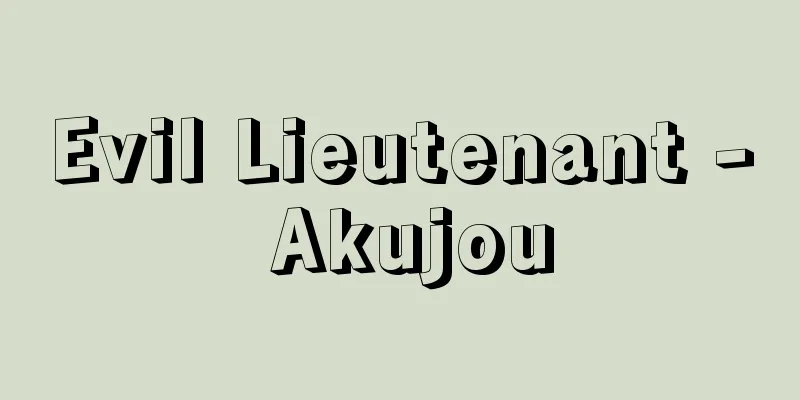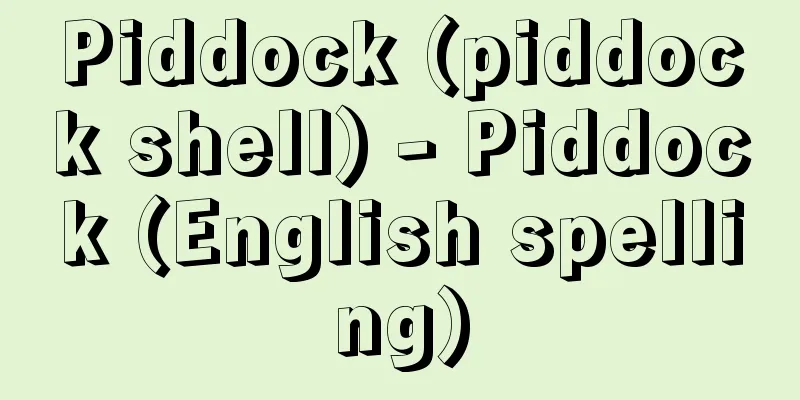The first circumstance is irrelevant

|
In procedural law, this refers to the principle that prohibits a second trial or ruling on the same case. [Yoshinobu Homma] Double jeopardy in criminal proceedingsIn criminal cases, the subject of trial is a criminal act that is alleged to have been committed in the past, so the principle of double jeopardy is fully applied. In other words, once a guilty or not guilty verdict or a verdict of acquittal has been finalized, the person cannot be held responsible for that crime again (Article 39 of the Constitution), and if a public prosecution is brought again for the same crime after a final verdict has been issued, a verdict of acquittal will be handed down (Article 337, paragraph 1 of the Code of Criminal Procedure). [Yoshinobu Homma] Double jeopardy in civil litigationIn civil cases, the private law rights that are the subject of adjudication can change over time (for example, even if a judgment confirms the existence of a 1 million yen claim, if 10 years pass without incident, the claim will become statute-of-limitations and will no longer exist). In addition, the previous lawsuit and the subsequent lawsuit often involve different rights at different times, and there are no cases that are strictly the same. Even if a right adjudicated in a previous lawsuit is disputed in a subsequent lawsuit, the court cannot avoid adjudicating that right, and the subsequent lawsuit will make its decision based on the judgment in the previous lawsuit. For example, if the existence of a 100 million yen claim is confirmed in a previous lawsuit and a subsequent lawsuit for the payment of interest is filed several years later, the 100 million yen claim cannot be dismissed just because the previous lawsuit already determined the claim. It is necessary to determine that a 100 million yen claim exists and determine whether or not the interest exists. Thus, in civil litigation, the effect of a judgment is manifested in the form that the content of the judgment in the previous lawsuit is binding on the court in the subsequent lawsuit (this is called res judicata), and is not usually manifested in the form of res judicata. However, this is merely manifested in this way due to the above-mentioned characteristics of rights in civil cases, and there is also a view that idealizes it as being based on res judicata. [Yoshinobu Homma] [Reference items] | | |Source: Shogakukan Encyclopedia Nipponica About Encyclopedia Nipponica Information | Legend |
|
訴訟法上、同一事件については再度の審理・判決を禁止するとの原則をいう。 [本間義信] 刑事訴訟における一事不再理刑事事件では、審判の対象が過去に行われたとされる犯罪行為であるから、一事不再理の原則が貫徹する。つまり、有罪・無罪の判決、免訴の判決が確定すると、その事件について再度責任を問われることはなく(憲法39条)、確定判決があるのに同一事件についてふたたび公訴が提起されると、免訴の判決が言い渡される(刑事訴訟法337条1号)。 [本間義信] 民事訴訟における一事不再理民事事件では、審判の対象である私法上の権利関係が時の経過とともに変化することがある(たとえば、判決で100万円の債権の存在が確定しても、何事もなく10年が経過すれば消滅時効にかかり、なくなってしまう)。また、前訴と後訴とでは異なった時点における別の権利が判断の対象になることが多く、厳密な意味での同一の事件というものはなく、前訴で判決した権利が後訴で争われても、その権利について審判しないというわけにはいかず、前訴判決での判断を前提として後訴裁判所は判断することになる。たとえば、前訴で1億円の債権の存在が確定し、数年後にその利息支払いの後訴が提起されたとき、1億円については前訴判決で判断済だからといって却下するわけにはいかない。1億円の債権が存在するとの判断をして、その利息の存否について判断することが必要である。このように、民事訴訟では、判決の効力は、前訴判決の判断内容が後訴裁判所を拘束する、という形で現れ(これを既判力という)、一事不再理という形では現れないのが普通である。しかし、これは民事事件における権利の前記の特徴からそのような現れ方をするにすぎないのであって、その根拠は一事不再理である、として理念化する考え方もある。 [本間義信] [参照項目] | | |出典 小学館 日本大百科全書(ニッポニカ)日本大百科全書(ニッポニカ)について 情報 | 凡例 |
<<: Linear fractional transformation
>>: Primary independence - Ichijidokuritsu
Recommend
Crevice corrosion
...The cause is repeated dry and wet cycles due t...
Dayānanda Sarasvatī
1824‐83 A modern Indian religious reformer. Also k...
Red mosquito larva - Red mosquito larva
…It is a good bait for fishing sea bream, black p...
Ariel - Possible
…He served as a university professor, director of...
Campion, T.
...From the Elizabethan period through to the rei...
Philadelphia - Philadelphia (English spelling)
The largest city in the state of Pennsylvania, US...
Arab Academy
In 1154, Nur al-Din of the Zengid dynasty conquer...
Kakeyama style pottery - Kakeyamashi Kidoki
...A settlement site from the late Yayoi period t...
Catskill Mountains - Catskill-san's house (English spelling) Catskill Mountains
A mountain range in the northeastern part of the A...
Stockholm International Peace Research Institute - Stockholm International Peace Research Institute
Stockholm International Peace Research Institute (...
Performance - Kougyou
Generally speaking, it refers to an event that is...
Utaidashi Shiashirai - Utaidashi Shiashirai
…(c) A short musical accompaniment played before ...
Kawahigashi [town] - Kawahigashi
A former town in Kawanuma County, Fukushima Prefec...
Nicho - Nichiou
A Nichiren sect monk from the early modern period...
Yosan Line
The name of the railway line of the Shikoku Railw...









